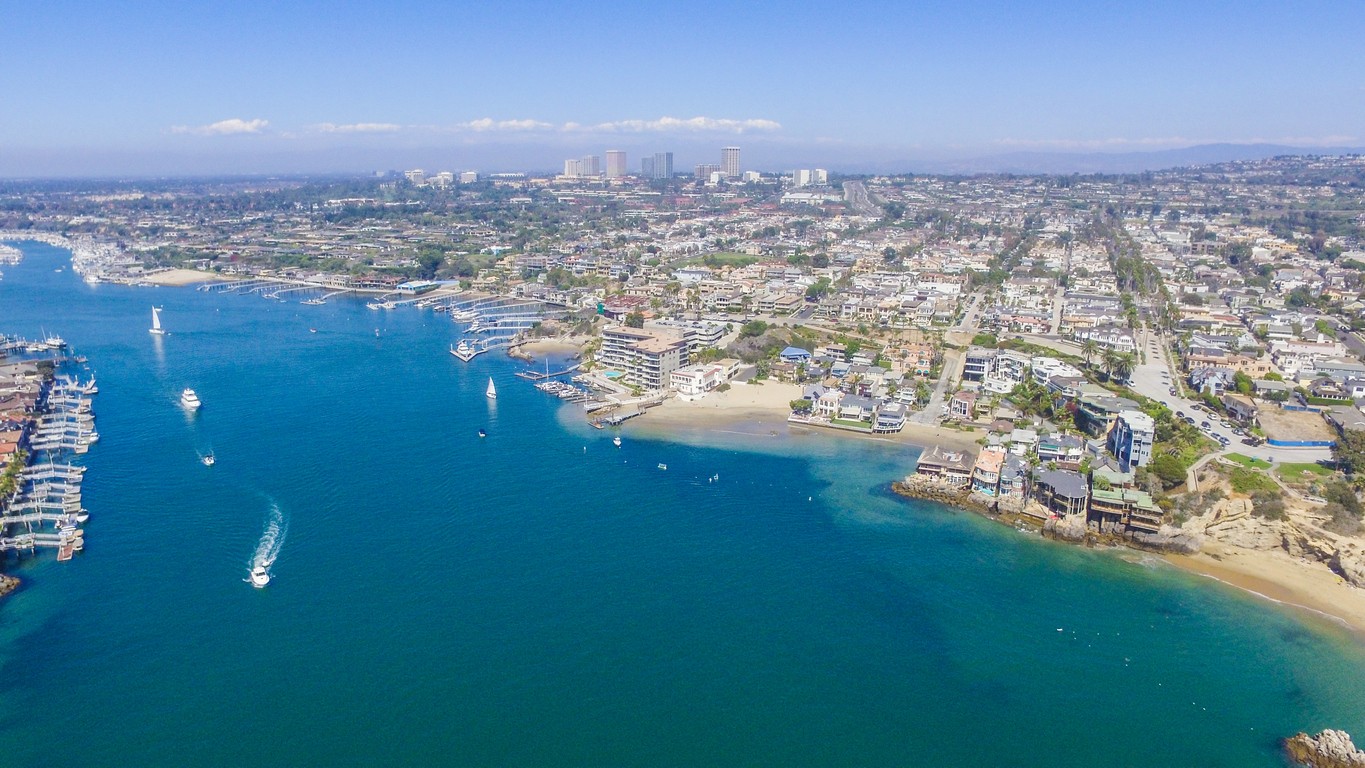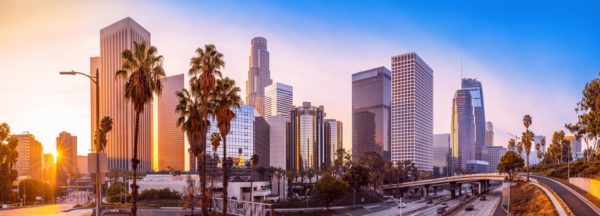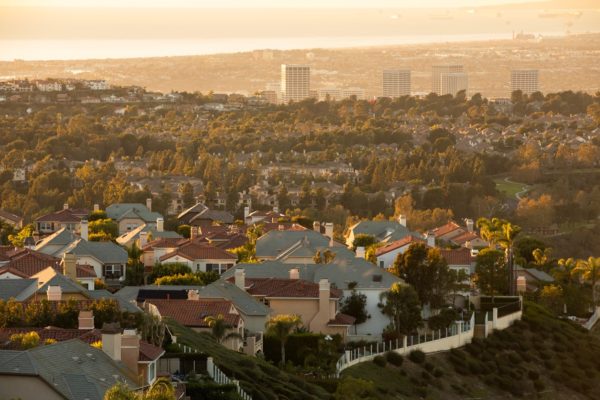
South Coast Air Quality Management District (SCAQMD) has enforced some of the strictest air quality laws in the nation. We will discuss what this means for companies that conduct business in this area, and the initiatives they are spearheading.
The SCAQMD, often referred to as South Coast, was established in 1976 and is the organization in charge of controlling stationary sources of air pollution in the Salton Sea Air Basin and the South Coast Air Basin in Southern California.
It was essential for SCAQMD to take initiatives for controlling air quality. These programs and initiatives play a significant role in them amount of pollutants in the air overall.
South Coast Air Basin (SCAB)

Most of Southern California lies within the South Coast Air Basin, a 10,000-square-mile region (SCAB). The entirety of Orange County and the urban areas of the counties of Los Angeles, Riverside, and San Bernardino are included in the SCAB area.
It is now widely known that residents of the SCAB area are subjected to some of the worst air in the country. But this issue is familiar. The truth is that since 1947, residents of SCAB have battled air pollution.
The SCAB has some of the poorest air quality in the country for three main reasons:
- The SCAB is the second most populous urban area in the United States, with a population of around 17 million. Compared to other metropolitan regions of similar size, this one has many cars and few public transportations because of all those people.
- Among all the major American cities, the SCAB has the sunniest days (with the exception of Phoenix). The same sunshine that draws people outside also contributes to the production of air pollutants in the atmosphere.
- The two busiest ports in the United States, Los Angeles and Long Beach are in the SCAB.
The severe air quality issue in Southern California results from all of these factors.
SCAQMD: An Overview
SCAQMD is one of the 35 organizations in California responsible for regulating air quality. Each of these organizations was founded with the specific aim of limiting air pollution within its administrative boundaries.
More than 28,000 enterprises, ranging in size from small corner gas stations to massive petroleum refineries, are subject to compliance checks as part of the SCAQMD’s programs and initiatives that manage air quality in the SCAB.
The SCAQMD is often at the forefront of the country’s regulatory efforts in air quality. In addition, stiff penalties are applied for non-compliance that goes up to $1 million per day, depending on the severity of the issue.
Mission of SCAQMD

The goal of the SCAQMD is to improve air quality and safeguard the health of all South Coast Air District citizens. The SCAQMD is the regulatory body in charge of enhancing air quality in the Coachella Valley and other significant parts of Los Angeles, Riverside, Orange County, and San Bernardino counties.
With 17 million people live in the area, over half the entire state of California lives in this area. Despite considerable air quality improvements, more has to be done to safeguard the public’s health through creative and useful methods.
Air pollution triggers or makes worse various kinds of heart diseases, asthma attacks, premature death, and some types of cancer. For over eight decades, the South Coast AQMD has been at the frontline of the country’s efforts to reduce carbon emissions.
Role of SCAQMD
The South Coast AQMD is in charge of limiting air pollution emissions, mainly from stationary sources. These could be anything from big refineries and power facilities to the local gas station. According to South Coast AQMD permits, around 28,400 such companies are functioning.
Numerous consumer goods containing solvents that evaporate into the air, such as furniture varnish, house paint, and countless other items, are also considered stationary sources. Stationary sources, including buildings for commercial use and homes, cause around 25% of the ozone-forming air pollution in this area.
The remaining 75% originates from mobile sources, primarily from automobiles, trucks, and buses, but also from construction machinery, boats, railroads, and aircraft. Instead of local organizations like the South Coast AQMD, state or federal organizations like the California Air Resources Board and the United States Environmental Protection Agency set the emission guidelines for mobile sources.
Green Initiatives by SCAQMD

The Burbank Glendale Pasadena Airport Authority is dedicated to sustainability and reducing air pollution. To comply with the 2016 AQMP Facility-Based Mobile Source Measures, Hollywood Burbank Airport has been working with the SCAQMD governing board since May 4, 2018.
To achieve these requirements, the South Coast Basin Airports and the South Basin Airports have collaborated to exchange airport best practices, shared strategies, and policies for creating Air Quality Improvement Programs.
BUR has created thorough AQIPs that serve as a holistic strategy to lower emissions from sources associated with airport operations that are not aircraft movable. The AQIPs show the authority’s long-standing dedication to sustainability and air pollution reduction, which is evident in the Airport’s operations and development plans and is now being documented in the AQIP. Another major initiative by the SCAQMD is the WAIRE Program, with a goal to reduce the amount of warehouse emissions in the South Coast region.
Ground Support Equipment Emissions Reduction Policy
The ground support equipment emissions reduction policy compels GSE operators to cut Nitrogen Oxide emissions to fulfill fleet-wide average targets. Their target goal is to get the fleet for airport average composite GSE emission factor down to or below 1.66 g/hp-h of nitrogen.
This policy’s action plan is for employees to monitor compliance, demand yearly data collection, create reporting protocols, and compute emissions. This policy will be implemented by imposing lease and license conditions.
RITC Solar Facility
The roughly 4-acre roof structure of the RITC can facilitate a solar panel array with a 2,200 MWh peak capacity. A 2.0 million-watt photovoltaic system will be put on the RITC roof, which will help achieve LEED Gold certification and significantly ease the burden on nearby utility providers.
These panels must be installed and operated by Burbank Water and Power (BWP), which has the authority to do so. After BWP installs the solar panel farm at RITC, BUR will help BWP operate at the maximum capacity, which is made possible by RITC.
After BWP installs solar panels at the RITC, BUR will offer assessment reports that estimate the annual production of renewable energy.
Solar energy solutions can help lower air emissions and enhance air quality since they supply energy for household heating, cooling, lighting, and water heating without direct emissions.
Solar energy is a renewable resource that significantly lowers greenhouse gas emissions and prevents climate change, which is essential for safeguarding people, animals, and ecosystems. Additionally, solar energy can enhance air quality and decrease water use in energy generation.
Structure of SCAQMD
SCAQMD comprises ten offices, ranging from human resources to policymaking. The top three are as follows:
- Governing Board: The thirteen governing board members meet monthly to set policy and vote on new or revised rules.
- Executive Office: This team transforms district goals and objectives into enforceable rules and programs to satisfy air quality criteria.
- Engineering & Compliance: This division is in charge of permits and compliance for the district. It collaborates closely with nearby companies as a result.
Role of SCAQMD in Regulating Air Pollution

Industries and factories significantly contaminate the air and make it unbearable for people living near them. The sources that contribute to air pollution can be divided into two major categories when you examine them:
- Stationary sources
- Mobile Sources
Mobile sources include vehicles like cars, trucks, buses, ships, and trains used for transportation, whereas stationary sources are building like factories that produce a particular product.
Mobile sources account for almost 75% of emissions within the SCAB, with stationary sources accounting for the remaining 25%.
The California Air Resources Board regulates mobile sources, whereas the SCAQMD concentrates on reducing pollution from stationary sources (CARB).
The intricacy of California’s air quality standards is demonstrated by the fact that the SCAQMD cannot control all sources of air pollution.
As a substitute, cooperation between the CARB, SCAQMD, and Environmental Protection Agency (EPA) is required to guarantee that air quality standards are met in one of the most heavily polluted areas in the country.
Comply With SCAQMD Rules With the Help of Coldwell Solar
South Coast AQMD advocates energy efficiency, low-carbon fuel technology (natural gas vehicles, electric hybrids, battery-electric vehicles, hydraulic hybrids, market incentive programs for renewable energy, and vehicle miles traveled (VMT) reduction initiatives).
The South Coast AQMD is in charge of limiting air pollution emissions, mainly from stationary sources. These could be anything from big refineries and power facilities to the local gas station. The South Coast AQMD authorizes around 28,400 companies to operate.
If you want to install commercial solar panels to reduce air pollution and comply with SCAQMD policies and initiatives, contact Coldwell Solar for further details.

